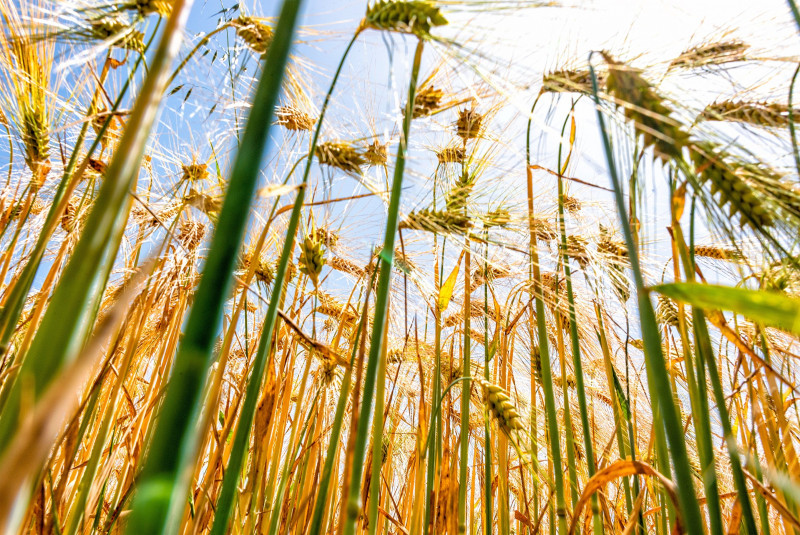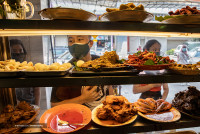GRAINS, sugar, palm oil and citrus fruits... These are just a few examples of the foods whose production is likely to be impacted by the El Niño weather phenomenon. Consumers are set to feel a direct impact, with prices expected to rise in 2024, in an economic context already strained by inflation.
Shades of a 2015 El Niño redux? The price of cocoa reached a seven-year high in June, with the price per tonne soaring by around 25% since the start of the year. According to data firm S&P Global Commodity Insights, cocoa stocks are set to fall to unusually low levels, according to statements shared by one of its analysts to US TV channel CNBC. And there's no end in sight to the freefall, as floods and humidity attack cocoa trees in Côte d'Ivoire, which accounts for 40% of the world's cocoa production. At the same time, drought in other parts of West Africa is preventing trees from producing enough pods.
These seemingly contradictory consequences are the effects of the powerful El Niño weather phenomenon. This is the name given to a climate pattern that recurs on average every two to seven years and originates in the waters of the equatorial Pacific Ocean, off the coast of Latin America.
One of its signature effects is a rise in the planet's average temperature. These consequences are all the more noticeable as the planet was under the influence of El Niño's opposite, La Niña, which cools the waters in this part of the Pacific, for a period of nearly three years between July 2020 and March this year.
According to the World Meteorological Organisation (WMO), there is reason to expect "increased rainfall in parts of southern South America, the southern United States, the Horn of Africa and Central Asia," as well as "severe droughts over Australia, Indonesia, parts of southern Asia, Central America and northern America," and "hurricanes in the central/eastern Pacific Ocean."
The El Niño phenomenon began several months ago, as confirmed by the WMO. With the episode set to continue into the second half of the year, the Food and Agriculture Organisation of the United Nations (FAO) has been on standby since the spring.
"Southern Africa, Central America and the Caribbean and parts of Asia are of particular concern, as a number of countries in these regions already face high levels of acute food insecurity and key cropping seasons fall under the typical El Niño weather patterns of drier conditions. Northern areas of South America are also at risk to potential dryness, while Australia normally experiences suppressed rainfall," wrote the FAO in a report published at the end of April.
Which foodstuffs will be affected by El Niño?
While it's generally understood that cocoa production will be affected by climate change, unfortunately it won't be the only foodstuff. A few days ago, Coface for Trade, a major trade risk insurer, published a very concrete analysis of how our plates could be affected. It's key to gauge the climatic consequences on the biggest producers, such as Brazil, to fully grasp what's at stake.
For example, yields of sugar cane, soya, coffee and oranges from Brazil, the world's leading producer of all these everyday essentials, are likely to fall. India is also likely to be impacted, which should weigh on its production of potatoes, rice, wheat and sugar cane.
As for Indonesia, the El Niño phenomenon is expected to cause a drop in palm oil and rice production there, while Australia's barley and rapeseed markets will be affected. Indeed, the trade journal France Agricole reports a potential 30% drop in wheat and barley harvests Down Under for the 2023-2024 season, citing forecasts from the Australian Department of Agriculture.
For consumers, the most visible consequence will likely be higher prices at retail in 2024.
"The example of South-East Asia is a relevant illustration of this. Various El Niño episodes in the last 20 years have generally led to inflationary pressures on food prices in the region. Rice, which accounts for 60% of domestic cereal consumption in the region, is very vulnerable to the effects of El Niño, while its water-intensive crop is likely to suffer from low levels of rainfall. Furthermore, the weight of food in regional consumer price indices is significant (around 40%), raising fears of a surge in inflation in the medium term," explains Coface for Trade. – ETX Daily Up, August 10, 2023





















